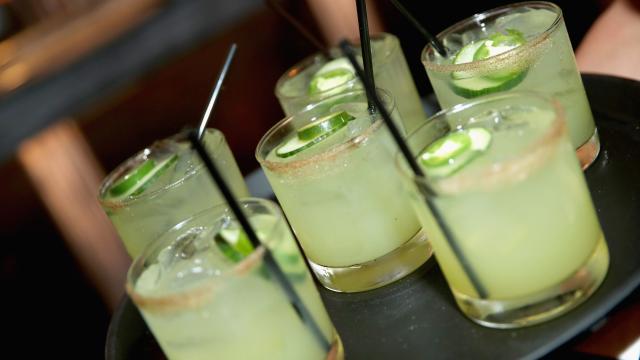The negative effects of secondhand smoke are well-documented – America’s CDC estimates that tens of thousands of nonsmokers die every year in the country due to exposure to someone else’s cigarette habit. But a new study out Sunday suggests that the secondhand effects of alcohol consumption are another source of serious harm, with one in five Americans hurt by another person’s drinking annually.
That alcohol regularly injures and kills people is obvious. But it’s worth pointing out the sheer scale of damage it can cause. Last year, for instance, a report by the World Health Organisation found that drinking directly contributed to just over 5 per cent of all deaths worldwide in 2016.
These alcohol-related deaths ranged from car accidents and overdoses to terminal cases of liver cancer and other chronic diseases. Yet there’s been considerably less work done to tally up the indirect destruction that problem drinking can cause, according to study author Katherine Karriker-Jaffe, a senior scientist at the California-based nonprofit Public Health Institute.
“These harms are missed if we only focus on the problems that heavy drinkers experience as a result of their own alcohol use,” Karriker-Jaffe, who works at the institute’s Alcohol Research Group, told Gizmodo via email. “We have been collecting information on secondhand harms from drinking since the year 2000, but this study shows new data on a range of harms that we haven’t asked about before on such a broad scale in the U.S.”
The study, published in the Journal of Studies on Alcohol & Drugs, relies on data from two nationally representative surveys taken of more than 8000 adults over the age of 18 in 2015.
Based on that, Karriker-Jaffe and her team estimated that 21 per cent of women and 23 per cent of men in the U.S. had experienced some form of secondhand harm from alcohol in the past year. But there were differences in the types and sources of harm experienced by either gender.
“Women are much more likely to experience harms caused by people close to them, including spouses and partners, but also extended family like parents and siblings,” Karriker-Jaffe explained. “Men are more likely to be harmed by strangers, and these harms may be what comes to mind for most people when they think about things like fights and damage caused by people who have been drinking.”
Younger people tend to drink more in the U.S., and subsequently experience more overdoses or other acute alcohol-related harms. But those under the age of 24 were also more likely to experience these indirect harms in the study. And Americans who drank, especially heavy drinkers, were more at risk for secondhand harms of drinking, too, like harassment or threats from other drinkers.
“For women, being a heavy drinker is particularly risky, and I don’t think that most women who drink often or who drink heavily are aware that they may be at higher risk of harms such as physical assault by someone who had been drinking,” Karriker-Jaffe noted.
Because the study only asked about people’s experiences in the past year, she added, it’s likely that even these findings are underestimating just how much people have been indirectly hurt by other people’s drinking.
The study is the latest to make the case that our alcohol habits could stand to be tempered a bit. Experts like Karriker-Jaffe have long called for stricter policies that are already common elsewhere, such as restricting alcohol-related advertising, raising taxes on alcohol, or lowering the legal blood-alcohol limit on drunken driving—policies that would change Americans’ willingness to get as drunk as they do (similar laws have already drastically driven down smoking rates in the U.S.).
“In addition to strong alcohol policies that would improve public health, we should continue to screen people for heavy drinking when they are receiving healthcare, and we also should consider adding screening for social risk factors, like living with a problem drinker, to make sure people get the help they need—both for their own drinking and to provide support or protect them from heavy-drinking loved ones, if necessary,” Karriker-Jaffe said.
